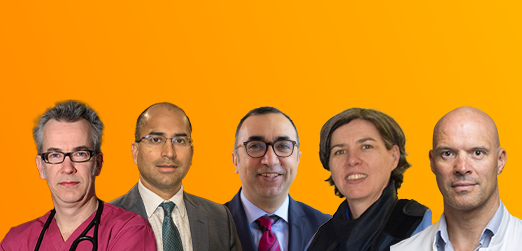- Home
- Transcatheter Edge-to-Edge Repair: An Assessment of its Long-term Impact on Mitral Regurgitation
Transcatheter Edge-to-Edge Repair: An Assessment of its Long-term Impact on Mitral Regurgitation
- Intervention
Available Credit:
- 1.00
Course Published On:
Course Expiry Date:

Overview
During this programme 'Transcatheter Edge-to-Edge Repair: An Assessment of its Long-term Impact on Mitral Regurgitation', Radcliffe Medical Education bring together an outstanding faculty of international leaders to address how TEER therapy has driven unparalleled clinical outcomes across a diverse group of mitral regurgitation patients over the past two decades.
Dr Marta Sitges (University of Barcelona, ES) moderates proceedings, and is joined by Dr Paul Mahoney (Sentara Heart Hospital, US), Prof Francesco Maisano (San Raffaele Hospital, IT) and Dr Anita Asgar (Montreal Heart Institute, CA), for a series of insightful presentations, patient case studies and discussions, which focus on long-term outcomes with TEER and consider the totality of evidence, including real-world data.
Support Statement
This programme is supported by an unrestricted educational grant from Abbott.
Disclosure
In compliance with EBAC guidelines, all speakers/chairpersons participating in this programme have disclosed or indicated potential conflicts of interest which might cause a bias in the presentations.
The Organising Committee/Course Director is responsible for ensuring that all potential conflicts of interest relevant to the event are declared to the audience prior to the CME activities.
Terms & Conditions
Radcliffe Education requires contributors to our CME programmes to disclose any relevant financial relationships that have occurred within the past 12 months that could create a conflict of interest. These will be identified in the faculty section if applicable.
The session, ‘Transcatheter Edge-to-Edge Repair: An Assessment of its Long-term Impact on Mitral Regurgitation’ is accredited by the European Board for Accreditation of Continuing Education for Health Professionals (EBAC) for 1 hour of external CME credits.
Each participant should claim only those hours of credit that have actually been spent in the educational activity. EBAC works according to the quality standards of the European Accreditation Council for Continuing Medical Education (EACCME), which is an institution of the European Union of Medical Specialists (UEMS).
Through an agreement between the European Board for Accreditation of Continuing Education for Health Professionals and the American Medical Association, physicians may convert EBAC External CME credits to AMA PRA Category 1 Credits™. Information on the process to convert EBAC credit to AMA credit can be found on the AMA website.
Instruction to Participants
There is no fee for taking part in this online learning activity.
Activities are designed to be completed within 60 minutes and must be completed by the registered user. Physicians should only claim credits for time spent on the activity. To successfully earn credit, participants must complete the activity in full in the indicated time frame.
To complete the course and claim certification participants must:
- Read the course outline information supplied and complete pre-test questions if supplied prior to starting the activity. Users must read and study the activity in its entirety before completing the post-test questions.
- Your results will be automatically saved and if a pass score is achieved (where applicable), you may be eligible to claim credit for the activity and receive a certificate of completion.
Target Audience
- Interventional Cardiologists
- Cardiothoracic Surgeons
- General Cardiologists
Learning Objectives
Upon completion of this activity, participants will be able to:
- Recall the long-term outcomes of TEER from real-world and RCT data
- Apply the results of real-world data to both simple and complex patients
- Describe how TEER is being used to benefit a range of patients with MR
Module |
Title |
Duration |
Speakers |
|---|---|---|---|
| Presentation | Long-term Outcomes of TEER | Muriel Sprynger | |
| Presentation | Real-world Data and Simple and Complex Patients | Francesco Maisano | |
| Presentation | Patient Cases | Anita W Asgar | |
| Discussion | Key Learnings and Close | Marta Sitges |
Chair
Speaker













